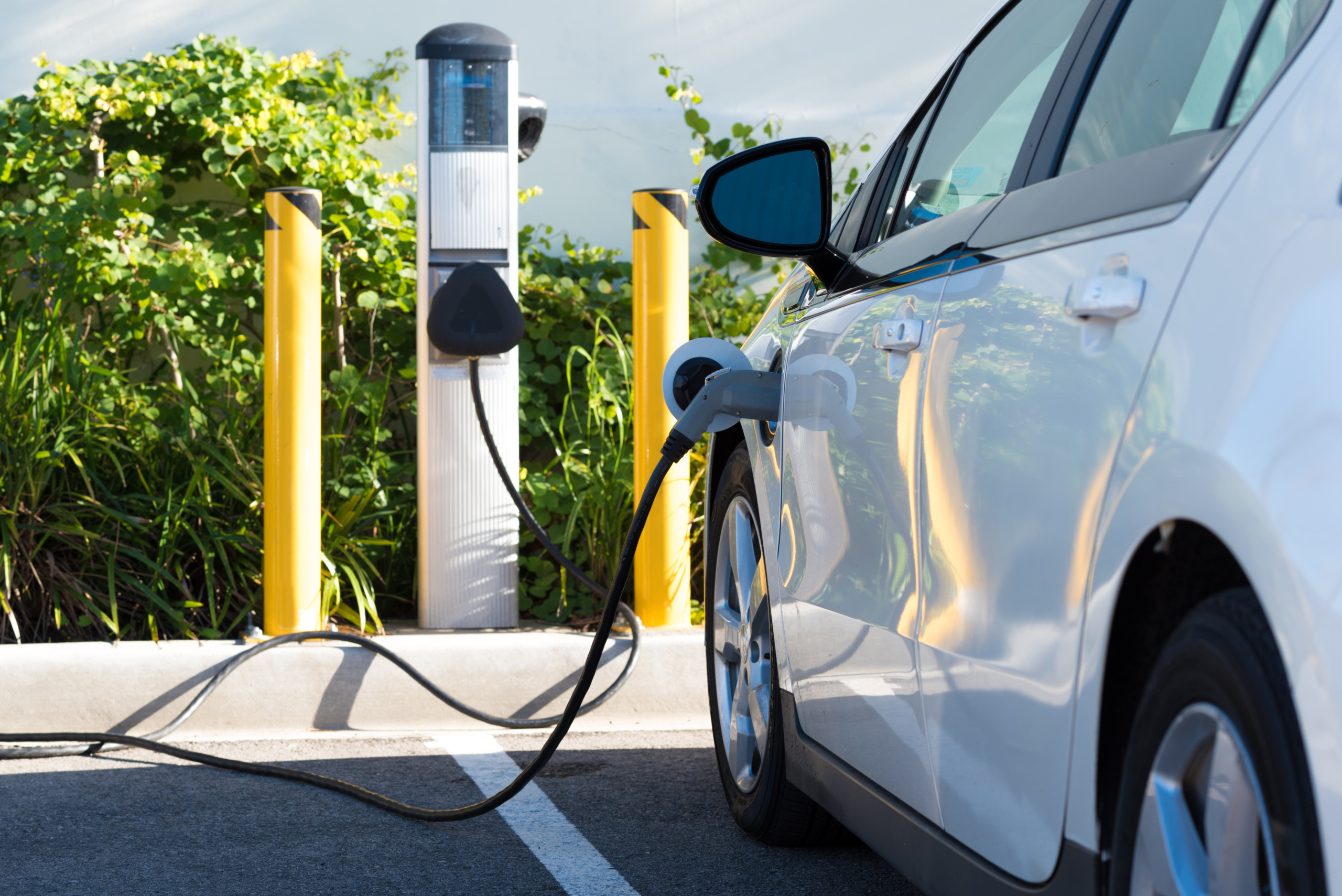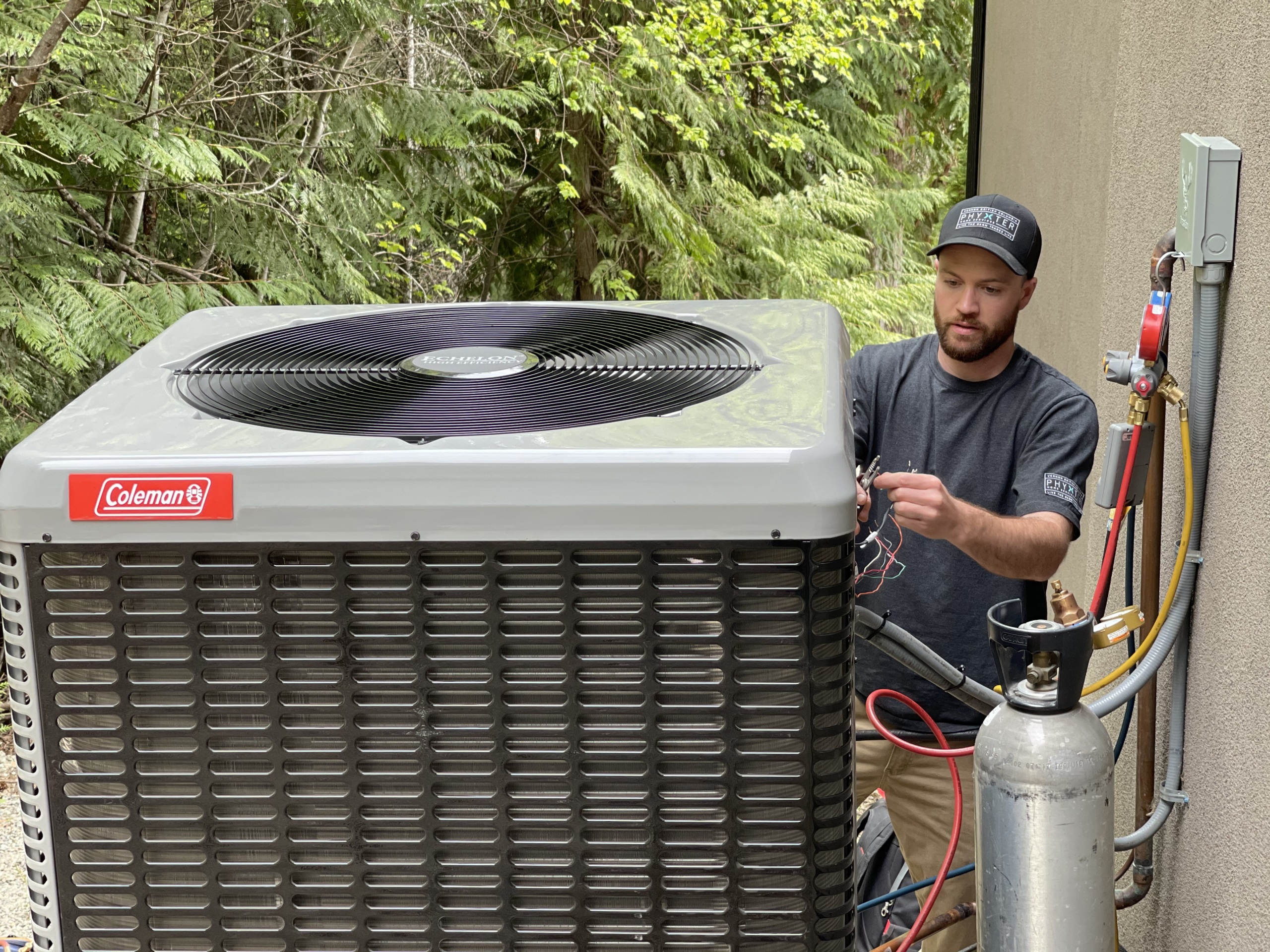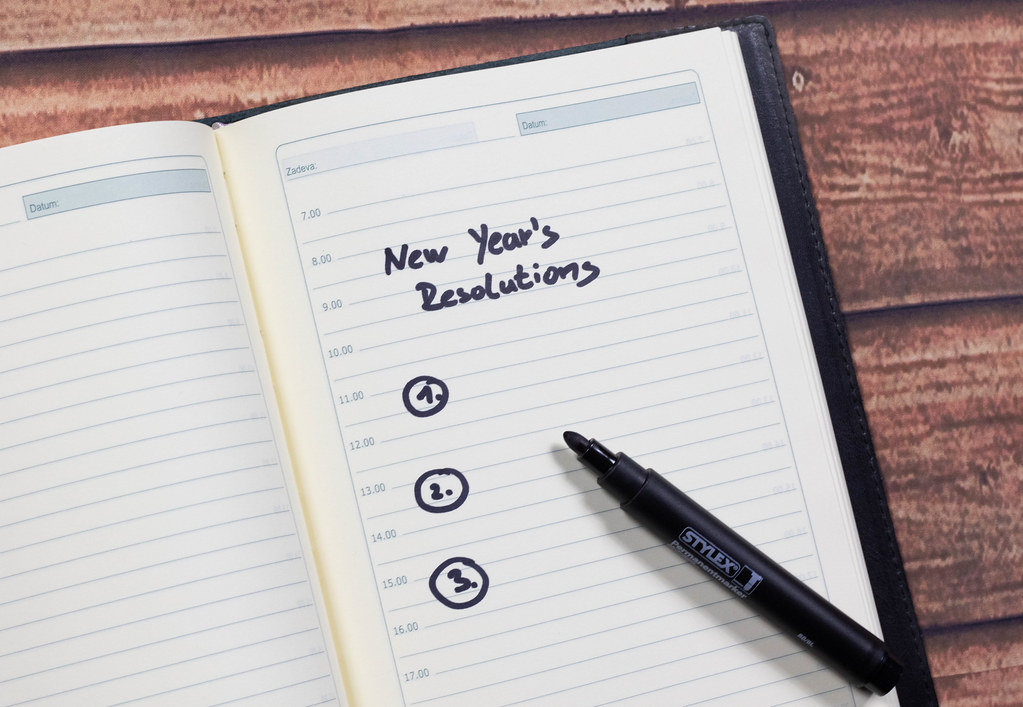
How to set New Year’s resolutions that help the environment
Is your New Year's resolution to be more environmentally conscious but you don’t know where to start? We’ve got you covered.
This time of year, more than a third of American adults sit down to write New Year’s resolutions – to lose weight, cut back on drinking, or reduce time spent on social media. While we know that specificity can help us hold ourselves accountable, sometimes it’s hard to know where to start or how to set good short-term goals that put us on the path to success. So if you’ve resolved to “be more environmentally conscious” this year but don’t know where to start, we have some sample resolutions and steps to help you succeed.
Our #1 tip: Take steps in January that will pay dividends throughout the year. The vast majority of people quit their resolutions by the end of January, but if you create a system that makes it easy for you to follow through, you’ll be more likely to succeed.
Choose your resolution
I will reduce the amount of waste I produce.
When trying to minimize the waste in our lives, it’s hard to know where to start. The idea of not buying plastic or other throwaway items seems almost impossible. Plastic is a part of most things we buy, from clothes to food packaging and gifts for friends. Transitioning to a zero-waste lifestyle is not about eliminating waste overnight but rather taking small steps. If you are pledging to reduce your waste in the new year, here’s a stepladder to climb.
#1 Do a waste audit
Before tackling your waste, it’s important to figure out how much and which types of waste you’re creating. A waste audit can help you identify which items you’re consuming and throwing away that you could stop using entirely or replace with a more durable, reusable item. Here’s how.
#2 Tackle just one source of waste
Assess what’s in your closet and pledge to only buy second-hand clothes if you need anything new this year. If you’re cleaning out your closet, do so mindfully, and make donations or send clothes that are too worn to donate to a textile recycler rather than throwing them away.
To start reducing waste in your kitchen or bathroom, look up zero-waste stores near you that allow you to bring in reusable containers to fill up with everything from shampoo to cooking oil.
#3 Join or create a zero-waste community
Joining a community of like-minded people can help you learn new ways to reduce waste. Buy-nothing groups on Facebook can connect you with neighbors who are getting rid of something you might need, to save you from buying anything new.
If you can’t find a group like this in your area, focus on zero-waste steps that you can get your friends, family and neighbors involved in. For example, make your compost bin communal and encourage neighbors to drop off their yard trimmings or food waste there. Talk with your family and friends about committing to a zero- or low-waste gifting policy for birthdays and other holidays. Check out our Buy Less Give More guide for ideas.
Reducing waste takes time. That’s okay. Taking it slow is good because zero-waste is all about what happens to the things you buy after you are done with them. It’s about progress, not perfection.
I will reduce my food waste.
We waste about 30%-40% of all the food in the United States and 37% of that food waste occurs in our own homes. That means all the resources that went into producing that food – fresh water, soil nutrients, fuel used to transport the food, packaging materials and more – are wasted. And when that organic waste breaks down in landfills, it creates methane, a potent greenhouse gas that contributes to global warming.
Here are three steps you can take today that will help you reduce food waste all year long:
#1 Organize your refrigerator to make it easy to keep track of what you need to use
Out of sight really is out of mind – what you can’t see in your fridge, you won’t remember to use. By taking time in January to reorganize your fridge, you can ensure you’ll reduce your food waste the rest of the year.
- Store all of one type of food together. This can help you keep track of how much you have of an item so you don’t accidentally buy more. Storage bins can help you keep similar foods neatly grouped together and see at a glance what you have. Low waste version: Repurpose a tupperware container that is missing its lid.
- Create a “use first” bin in your fridge. Each week, look through your fridge and identify anything that needs to be used up that week, and place it in this bin. Then, throughout the week, as you prepare food or pack your kids’ lunches, start by grabbing ingredients from this bin.
- Invest in glass storage containers so you can see what is in each container. If you can see that leftover meatloaf, you’ll be more likely to use it than if it’s hiding in an opaque container.
#2 Print out a guide to storing food properly and hang it up on your fridge
Storing food properly is important because it can help keep it fresh and safe to eat for longer. But keeping track of the best ways to store every type of food is nearly impossible. Thankfully, the New York Times created a helpful chart detailing how to store some of the most common types of produce. The U.S. Environmental Protection Agency has also put out its own helpful guide. Print one of these guides and hang it up where you’ll see it and follow it.
#3 Start composting
Even when we’re being conscious about food waste, we’re not perfect. And some food scraps are inedible. That’s where compost comes in. A 2019 PIRG Education Fund report found that composting all organic waste — including food scraps and yard trimmings — could eliminate nearly one-third of all materials sent to U.S. landfills and trash incinerators. We could eliminate a lot of greenhouse gas emissions by properly composting food scraps.
From kitchen bins and backyard tumblers to curbside compost pickup and drop-off spots, there are many ways to compost. Every community has something different, and you’ll need to research what yours has to offer and what works best for you. If your community does not offer curbside compost pickup (like trash and recycling pickup), search for private haulers, community gardens, farmers markets or grocery co-ops in your area that accept compost drop-offs. If you can’t find any options like this or would prefer to do it all on your own, check out the resources below for how-tos.
Resources:
- How to kitchen compost – If you don’t have a yard or are concerned about attracting critters, here’s how you can set up a compost system in your kitchen
- How to backyard compost – Background info and a cheat sheet to help you get started
- FindACompost.com – Find where you can drop off food scraps or other materials for compost
- MakeSoil – Find where you can drop off completed compost for farmers, gardeners, or others to use to regenerate healthy soil
Then, take steps today to set yourself up for success.
- Sign up for your composting service of choice
- Buy or build your compost system
- Print out a guide on what can be composted in the specific system you’re using and hang it above your trash can
For more ideas for food-related New Year’s resolutions, check out some of our ideas from last year.
I will ‘green’ my home.
Homes account for 21 percent of all U.S. energy consumption and are responsible for 20 percent of our country’s carbon emissions. Fossil fuel appliances such as gas furnaces also contribute significantly to air pollution that puts our health at risk. And in the case of unvented gas stoves, that air pollution collects in our homes.
However, we can reduce air pollution and climate emissions in our homes with a few simple actions.
In 2023, resolve to ‘green’ your home by starting your electrification journey.
#1 Electrify your home, step by step
We can power our homes and appliances with clean energy if we electrify our homes. Transitioning to an all electric home can seem daunting, but remember: It’s a journey. You don’t have to do everything all at once. This year, take the time to sit down with your family and make a plan. Take each piece one at a time. Is your furnace or hot water heater near the end of its life? Start there and look into heat pumps or heat pump water heaters. Are you ready for some kitchen upgrades? Look into an induction stove. Need a new car? Look at electric options. Interested in rooftop solar? Research options in your area and get some quotes. For more information about where to get started, watch the recording of a webinar we hosted.
Even if you’re not ready for one of these bigger changes, you can take smaller steps to adopt greener practices at home.
#2 Focus on energy efficiency and conservation
Two-thirds of the energy we produce is wasted. We can make a major difference in climate emissions and air pollution through by making our homes more energy efficient and by conserving energy. Check out Environment America’s Citizen’s Guide to Reducing Energy Waste and adopt these practices in your own home this year.
#3 Switch to electric lawn equipment
Did you know that operating a commercial gas-powered lawn mower for one hour can result in as much ozone-forming emissions as driving a 2017 Toyota Camry about 300 miles across the state of Colorado. Even worse, operating a commercial gas-powered leaf blower for just one hour can result in a staggering amount of ozone-forming emissions – approximately the same as driving 1,100 miles from Denver to Calgary, Alberta. Switching from a gas-powered lawn mower or leaf blower to electric versions (or push mowers and rakes!) may seem like a small change, but can make a big difference.
I will substitute low- and no-emissions transportation for car travel.
In the United States, transportation is the leading source of climate change-causing greenhouse gas emissions. In addition, operating fossil fuel-powered vehicles pollutes the air, causing several negative health effects in surrounding communities. In the new year, we should commit to reducing our vehicular emissions by using more low- to no-emission transportation methods such as walking, biking and public transportation.
Wondering how you can put this into practice in 2023? Here are some ideas:
#1 Commit to walking, biking, or taking public transportation for a week for all your trips shorter than two miles
According to the most recent edition of the National Household Travel Survey nearly 50% of vehicular trips are 3 miles or shorter. If we could commit to using other methods of transportation for those trips we could significantly reduce our vehicular emissions. Not only would choosing to walk and bike on shorter trips reduce climate change-causing emissions and air pollution, it would also reduce stress. Reimaging Walking Distance explains the mental health benefits associated with stepping out of the car and into some fresh air. Luckily, choosing to go car-free has never been easier, in part because electric assisted bikes are becoming more and more popular. For those who struggle with the exertion required for a regular bicycle — or those who just want something more leisurely — e-bikes make trips easier and a lot more fun! To learn more about the benefits of e-bikes and how to get started, check out the Charged Up E-bike Factsheet.
#2 Commit to one day a week going car-free
Taking all trips using public transportation or walking and biking for one day a week can reduce individual transportation emissions, which, as previously mentioned, causes significant environmental and public health problems for our communities. While these are reasons enough to warrant moving away from the excessive use of personal vehicles, it has also become more expensive than ever to own a car. In 2022, auto loan debt reached an all-time high of $1.43 trillion dollars. As highlighted in PIRG’s Driving into Debt report, currently, owning a car is viewed as a necessity, so families take on significant amounts of debt to get where they need to go. Finding ways to reduce car trips can limit the mileage put on a vehicle, reducing the need for maintenance and, in some cases, extending its lifespan.
#3 Become a green transportation advocate
If doing any of these things makes you want to get even more involved in promoting walking, biking and transit in your community, here are some suggestions:
- If something such as a late bus, a missing sidewalk or crosswalk, a highway blocking you from your destination, or other bad infrastructure makes it harder to complete your journey, let your local city council member know about it by tweeting, calling, writing a letter or even setting up a meeting with them. On the other hand, if there’s great, people-centered streets on your route or quality transit, tell your local leaders how useful these things are.
- Consider joining a local transportation advocacy group such as a walking, biking, or transit coalition. If there isn’t one already, consider starting your own!
- Try bringing a friend or family member with you as you walk, bike, ride or roll and introduce them to the benefits of driving less and living more.
I will switch to an electric or hybrid vehicle.
If you’re looking to buy a new car in 2023, consider purchasing a plug-in hybrid or a battery-powered electric vehicle (EV) rather than a conventional gas-powered car. EVs reduce pollution and greenhouse gas emissions, save you money on gas and can be a blast to drive. You can find more information on whether an EV is right for you here.
No matter which resolution you choose, the most important thing is to stick to it. One is enough to start with, rather than overwhelming yourself trying to tackle your entire environmental impact all at once. While individual action alone can seem small and is not enough to curb global warming and stop pollution, it is an indispensable piece of the solution. And along the way to broader change, adopting environmentally conscious practices in our own lives can help us live better, healthier lives.
Topics
Authors
Danielle Melgar
Food & Agriculture, Advocate, U.S. PIRG Education Fund
Danielle works to ensure our food system produces enough nutritious food to feed everyone, without threatening our health, the planet, or the ability of future generations to grow food. Danielle lives in Chicago, where she enjoys staying active in the outdoors, trying out new recipes, and writing short stories.
Matt Casale
Former Director, Environment Campaigns, U.S. PIRG Education Fund
Holly Thompson
Former Beyond Plastic, Associate, U.S. PIRG Education Fund
Ryan Giunta
Former Transform Transportation, Associate, U.S. PIRG Education Fund
Find Out More

How federal tax credits can help you get an electric vehicle

Green schools guide

How federal tax credits can help you reduce energy waste in your home





